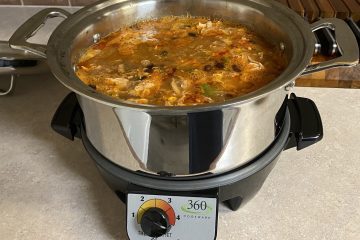Most of us who have spent a decent amount of time around a computer have a few shortcuts we like to use. The most popular by far seem to be Ctrl+C to copy a text or file and Ctrl+V to subsequently paste it where it needs to go.
But Windows has many more hidden keyboard shortcuts just waiting to make our lives easier, so let’s take a look several of these and what they can do for us. To make it easier to remember some of these keyboard shortcuts, I’ve bolded certain letters in their descriptions to highlight why a specific shortcut is chosen. For example, Ctrl+C is used to Copy text and files.
Core Editing Shortcuts
Starting with the basics, for editing text and handling files, here are the fundamental shortcuts with which you should be familiar:
Ctrl+C: Copies text and files.
Ctrl+V: Pastes copied text and files.
Ctrl+X: Cuts text and files, moving them from their current location to the clipboard.
Ctrl+Z: Undo, reverses your last action.
Ctrl+Y or Ctrl+Shift+Z: Redo, reimplements your last action. Sometimes these two are interchangeable, but certain programs only support one or the other shortcut.
File & Window Management
Alt+Tab: Switch between open windows. Holding Alt after using this shortcut displays a preview of your open windows and highlights the one you’re switching to, while tapping Tab again cycles through your open windows.
Win+D: Shows or hides desktop. Another way of looking at it is it shows or hides your currently open windows, making it easy to clear your desktop by minimizing everything at once.
Win+E: Opens File Explorer. Remembering this one means you can remove the program shortcut from your taskbar.
Win+L: Lock your PC. This is an easy shortcut to safeguard your PC when you step away, requiring authentication to regain access.
Alt+F4: Closes your current window or application.
Productivity Boosters
Win+Arrow Keys: Snap windows left, right, into corners, etc. This one is fantastic if you don’t want to take your hands off your keyboard to fiddle with window snapping. Win+Up Arrow expands your current app to take up the whole screen, while Win+Down Arrow minimizes it. Additionally, you can keep tapping left or right arrows to move windows between displays if you have multiple monitors. This one’s a really great shortcut to play around with!
Win+V: Open clipboard history (we wrote more about this here), as well as emoji, gif, and symbol pickers.
Win+Shift+S: Activate Screenshot/Snipping Tool, allowing you to select an area to screenshot, which is then copied to your clipboard.
Ctrl+Shift+Esc: Open Task Manager, an alternative to the multi-step mouse clicks needed to open the app.
Search & Multitasking
Win+S: Search quickly, bringing up the search bar area of Start menu.
Ctrl+Win+D: Creates a new virtual desktop, which is great for keeping work and personal windows and apps separate.
Win+Tab: Activates Task view, which shows open windows on each display as well as virtual desktops.
Ctrl+Win+Left/Right: Quickly switches between open virtual desktops.
Browser Shortcuts (universal)
Ctrl+T: Opens a new tab
Ctrl+W: Closes your current tab
Ctrl+Shift+T: Reopens closed tab, starting with the last one but continuing with previously closed tabs. This is a lifesaver when you accidentally close the wrong tab.
Ctrl+Tab: Switch between open tabs (left to right)
Ctrl+Shift+Tab: Switch between open tabs (right to left)
Ctrl+L: Jump to the address bar. This is another great shortcut to avoid having to move away from your keyboard just to move them back and type a URL.
This list may seem overwhelming, but you don’t have to memorize them all today. Just start using a few of the shortcuts that will make your daily usage faster and more convenient, and you’ll quickly find yourself reaching for the keyboard instead of the mouse for these quick actions. Then, when you revisit this list, you can add a few more shortcuts to your repertoire.
These are just a handful of the keyboard shortcuts available for daily use, with so many more hidden in various parts of Windows waiting to be found and used. The nice thing is most applications display available shortcuts in their dropdown menus, so keep an eye out for those if you find yourself repeatedly using the same menu options in your frequently used apps. The more productivity tricks you know, the better!
As an affiliate, we earn commissions from qualifying purchases using our links or coupon codes.

